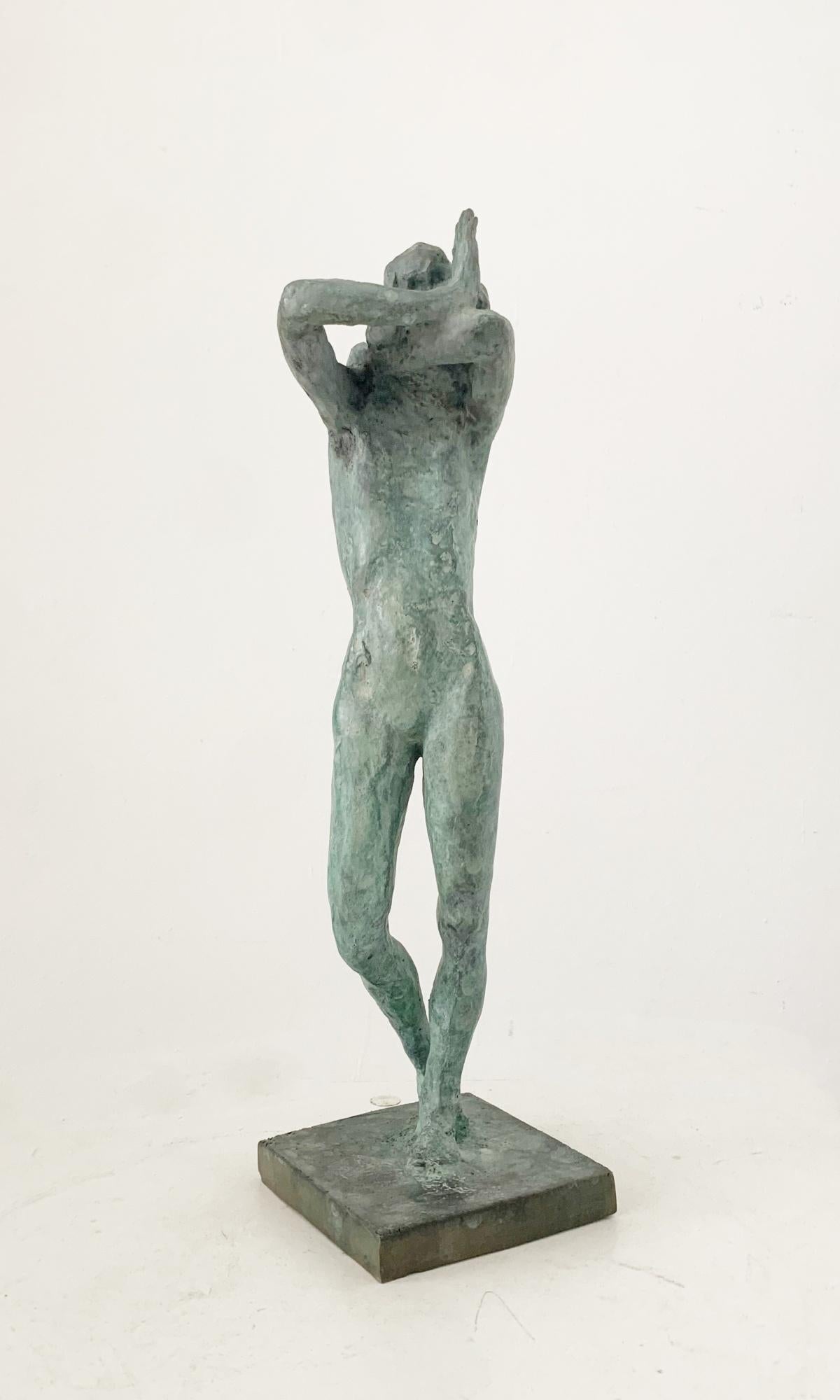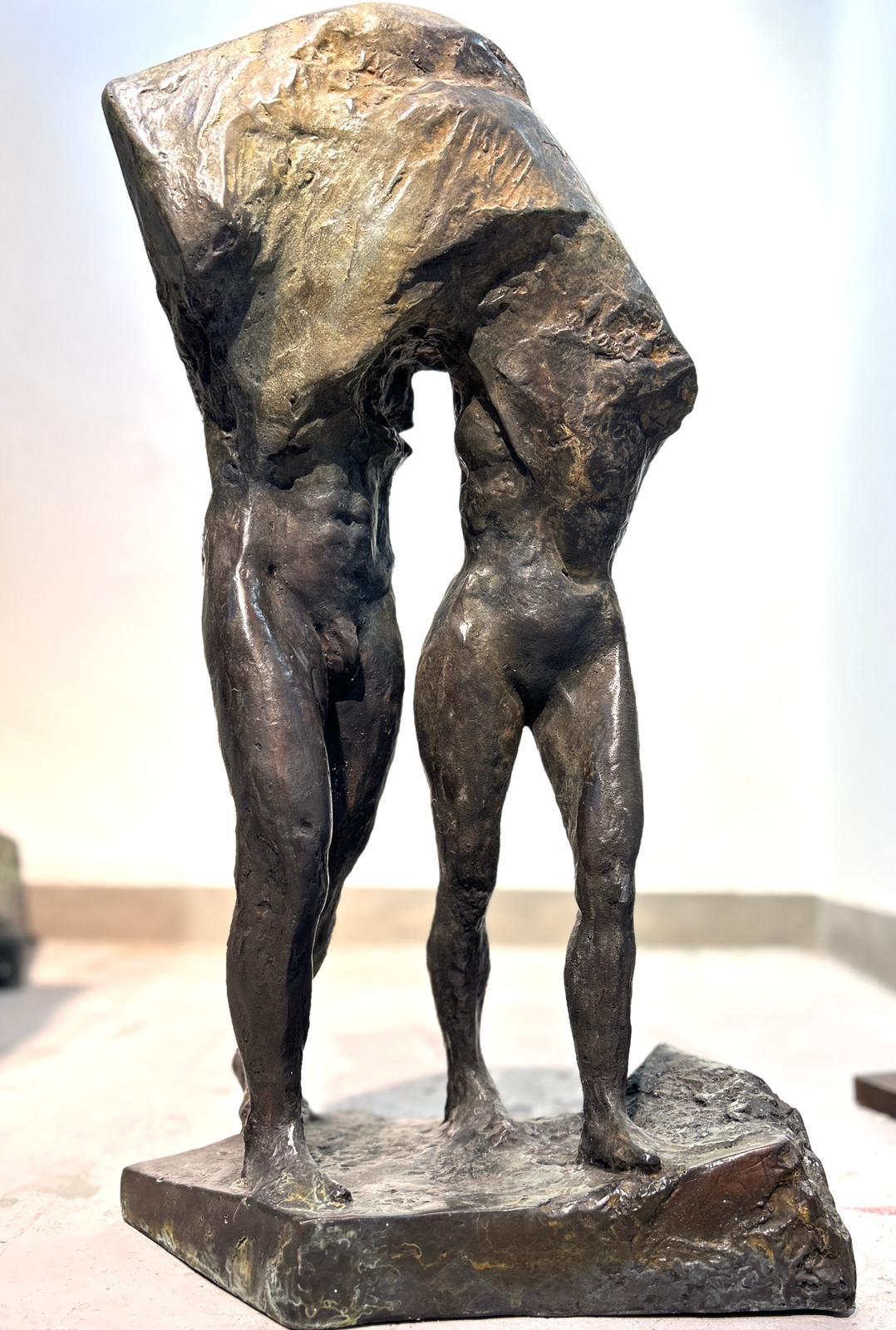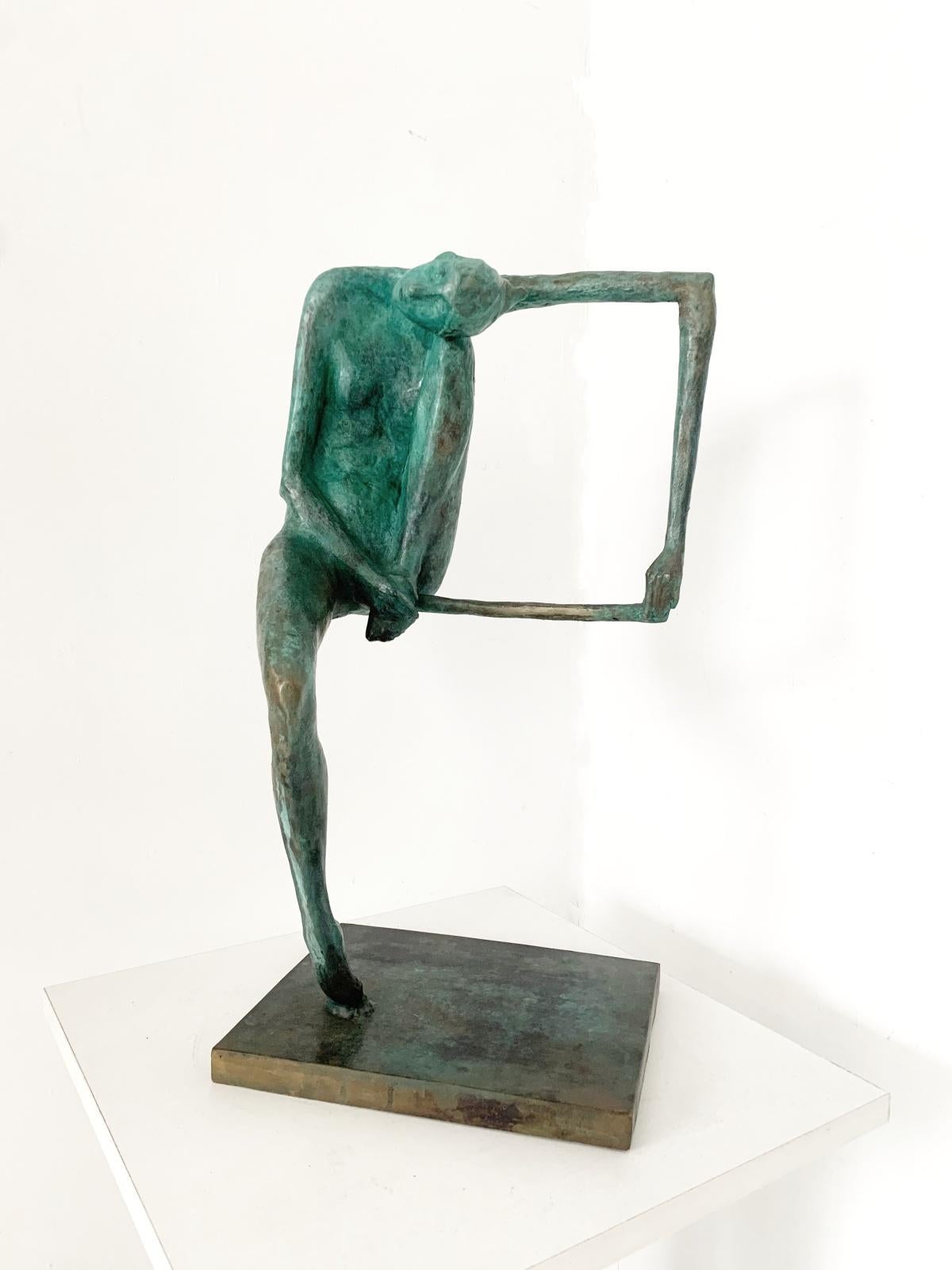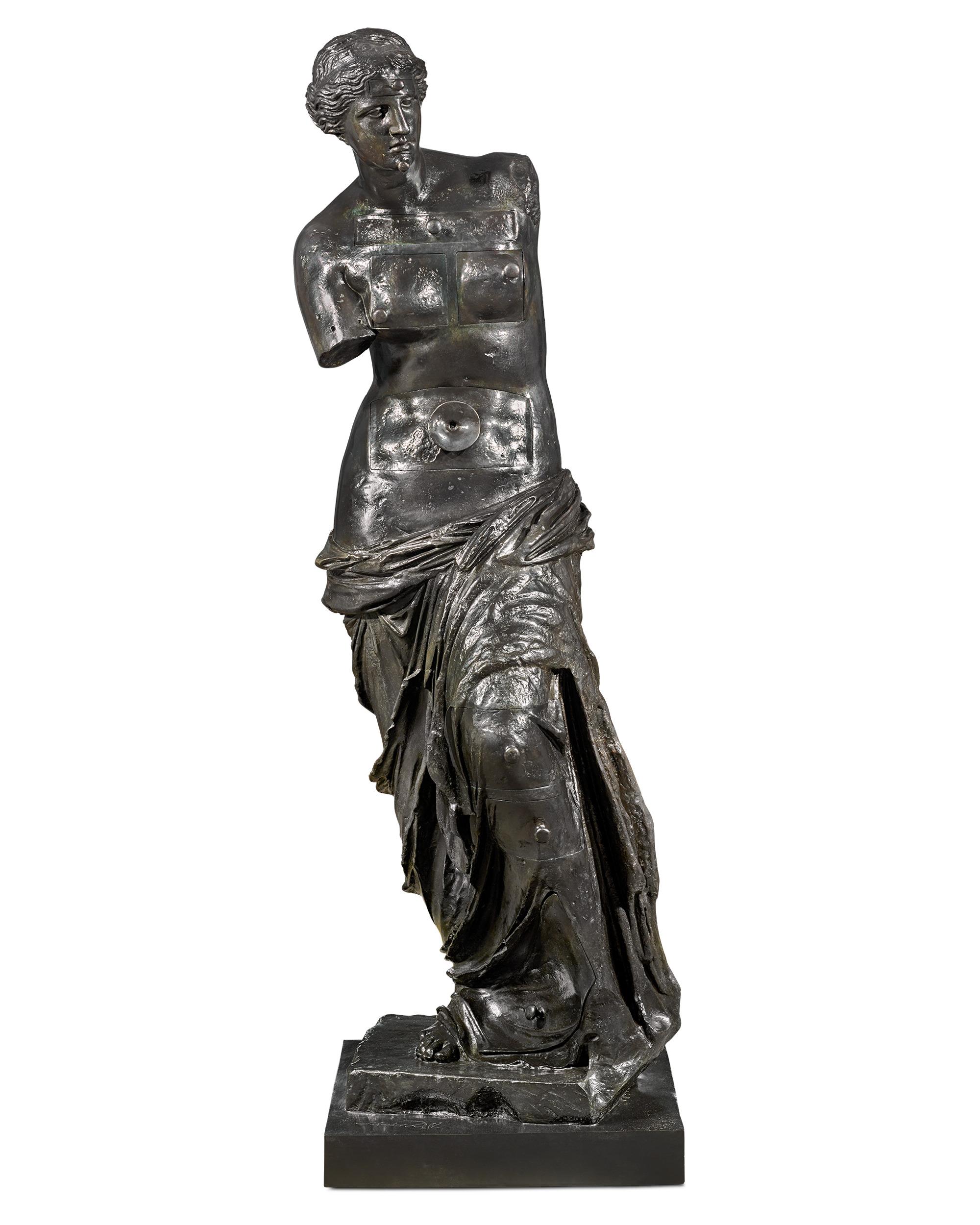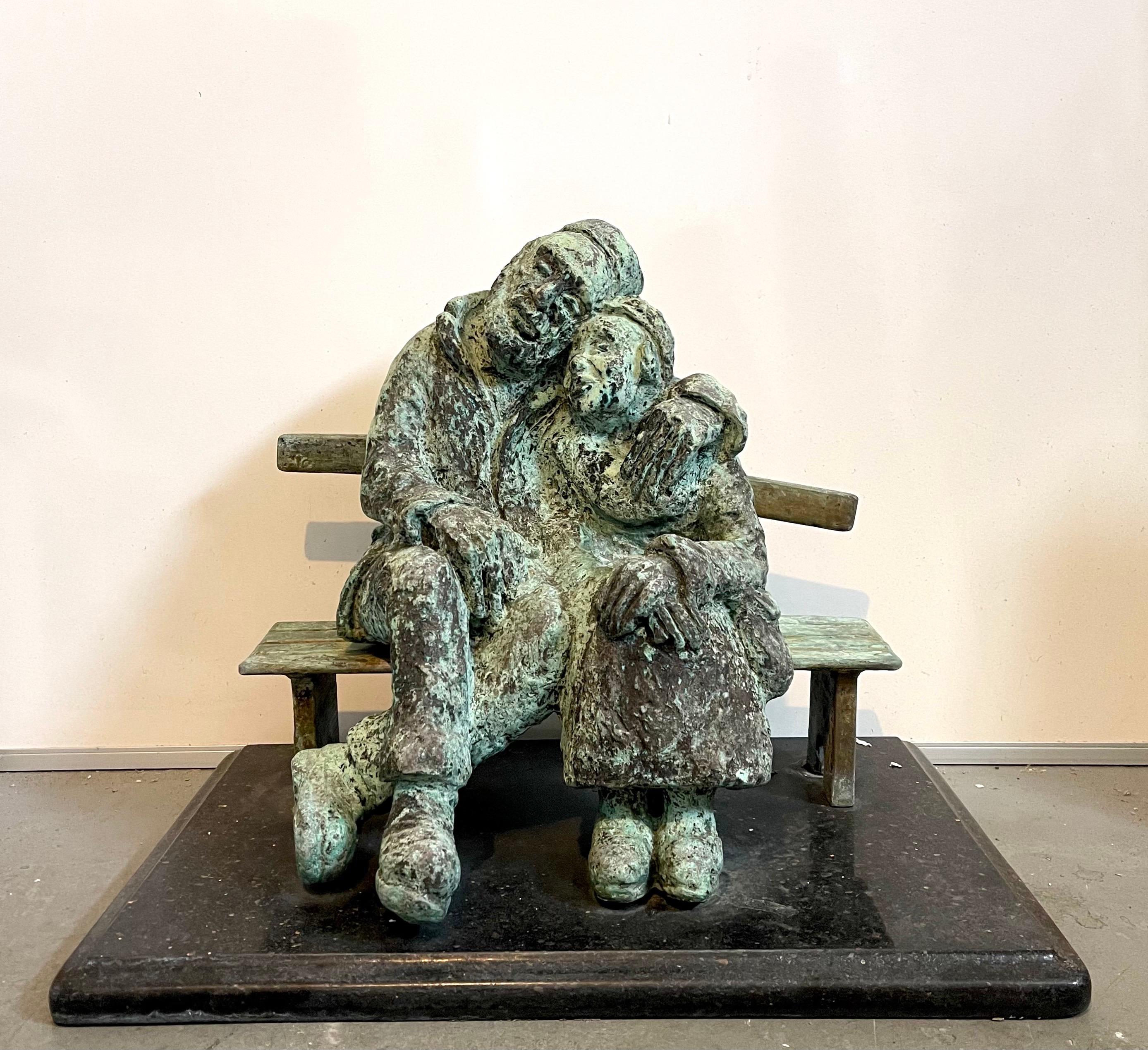Items Similar to How They Met Themselves By John Singer Sargent
Want more images or videos?
Request additional images or videos from the seller
1 of 7
John Singer SargentHow They Met Themselves By John Singer SargentEarly 20th century
Early 20th century
About the Item
John Singer Sargent
1856-1925 American
How They Met Themselves
Bronze
John Singer Sargent was among the most successful artists of his era. By the late 19th century, he was the most admired and sought-after portraitist across both Europe and America, and he was uniquely capable of conveying the style and elegance of the gilded age. While he is best known for his painted portraits, the artist excelled in various genres and media, but undoubtedly the rarest works of Sargent’s oeuvre are his sculptures. Although he completed very few sculptures in his career, Sargent demonstrated a meticulous devotion and enthusiasm for the medium, as expressed by the present bronze entitled How They Met Themselves.
Sargent began pursuing the art of sculpture beginning late in the 1890s. Although portraiture had brought him success and international acclaim, Sargent endeavored to find new inspiration around the turn of the century, proclaiming that he had “firmly decided to devote [himself] to other branches of art.” He expanded more and more into landscapes and figural works with a narrative quality.
The composition of this bronze is based on an iconic watercolor painting and drawing of the same title by the Pre-Raphaelite master, Dante Gabriel Rossetti. Sargent was a long-time admirer of the Pre-Raphaelites, Rossetti in particular. Rossetti’s own images of women were marked by a sensuality that served as an aesthetic inspiration to Sargent, and, according to his friend and biographer, Evan Charteris, Sargent kept an engraving of How They Met Themselves in his studio. Rossetti’s work depicts the dramatic moment two young lovers in medieval dress meet their supernatural counterparts in the woods, portending their deaths.
Saturated with poeticism, Sargent’s figures evoke the grand romanticism of the Pre-Raphaelites; their dramatic poses and solid modeling are a clear ode to his source image. For this work, Sargent wished to translate Rossetti’s superb two-dimensional modeling into a sculptural form. He greatly respected Rossetti’s technical ability, stating, “That is the difficult thing to do, anyone can paint, but to design a group so that it will — well, do in sculpture — that’s what counts. Rossetti could do it.”
Born in Florence to American parents, Sargent began his formal art training at the Academy of Fine Arts in Florence in 1871. In order to advance his education, the burgeoning artist moved to Paris to study at the École des Beaux-Arts from 1874 to 1878 under the great Emile Auguste Carolus-Duran. After a somewhat tumultuous start on the Paris art scene, the attention his work garnered at the Salon propelled Sargent to great success, and he exhibited there regularly. He quickly drew the attention of society’s elite, making Sargent one of the most fashionable and respected portraitists of the era. In addition to oil paintings, he also executed a number of watercolors, rapid charcoal portrait sketches he referred to as “Mugs,” and, of course, a select few sculptures, including reliefs for the rotunda of the Museum of Fine Arts, Boston.
As Sargent only began taking an interest in freestanding sculpture later in his career, they are incredibly rare, and this un-editioned series has only three other known examples. Another bronze casting of the present work resides in the Victoria & Albert Museum in London, underscoring its importance. Art historian Helen A. Cooper, an expert on American art who curated an exhibition of Sargent’s sculptures for Yale University Art Gallery in 2001 has said, “I feel sure that had he lived longer, Sargent would have made the full transition from painting to freestanding sculpture.” How They Met Themselves represents a fascinating aspect of the artist’s oeuvre that few have seen and a sought-after rarity in terms of Sargent’s works.
Early 20th century
8 5/8" wide x 6 3/4" deep x 11 3/4" high
- Creator:John Singer Sargent (1856-1925, American)
- Creation Year:Early 20th century
- Dimensions:Height: 11.75 in (29.85 cm)Width: 8.63 in (21.93 cm)Depth: 6.75 in (17.15 cm)
- Medium:
- Movement & Style:
- Period:
- Condition:
- Gallery Location:New Orleans, LA
- Reference Number:
About the Seller
5.0
Vetted Seller
These experienced sellers undergo a comprehensive evaluation by our team of in-house experts.
Established in 1912
1stDibs seller since 2013
13 sales on 1stDibs
Typical response time: 4 hours
- ShippingRetrieving quote...Ships From: New Orleans, LA
- Return PolicyThis item cannot be returned.
More From This SellerView All
- Vénus De Milo Aux Tiroirs By Salvador DalíBy Salvador DalíLocated in New Orleans, LASalvador Dalí 1904-1989 Spanish Vénus de Milo aux tiroirs (Venus de Milo with drawers) Signed "Salvador Dalí EA III/IV" (on base) Bronze One of the most famous sculptures of Salv...Category
20th Century Post-Impressionist Nude Sculptures
MaterialsBronze
- CoupleBy Agustín CárdenasLocated in New Orleans, LAInfused with a crisp modernity and subtle sensuality, this bronze sculpture by Cuban-born artist Agustin Cárdenas is an exceptional example of late-2...Category
20th Century Modern Figurative Sculptures
MaterialsMarble, Bronze
- Arabesque on Right Side, Right Hand Close to Earth, Left Arm OutsideBy Edgar DegasLocated in New Orleans, LAOne of a series of sculpted dancers created by the incomparable Edgar Degas, this exceptional bronze exudes all of the expressivity one expects from this 20th-century great. Degas captures the essence of his model in the graceful work, as she strikes a particularly difficult pose of the arabesque. The dancer's features have been manipulated and simplified, executed in a manner that seems almost as if one of Degas' Impressionist canvases has come to life. Degas was obsessed with capturing the dancer in motion throughout his career. He rendered their grace and movement in oil, pastel, pencil, chalk and wax - in fact, of the seventy-four wax sculptures created by Degas during his lifetime, forty of them depicted dancers. Seven of these belong to his series that capture the various forms of the arabesque, and the present work is included among them. It details one of the most difficult and animated poses of the ballet. Degas’ dancer is precariously posed in a study of balance and motion, one leg gracefully thrust into the air as she tilts her body down towards the earth and extends her arm forward. The sense of her movement is perfectly captured in the extraordinary work, as well as the fluid lines of her body. The bronze is a sought-after rarity in terms of Degas’ sculptures. Not only are his dancers the most desirable of his work, but this bronze is also distinguished by the fact that it is a Valsuani bronze, meaning it faithfully records Degas’ wax version’s pose as it appeared at the time of its creation. Most Degas' bronzes that are found on the market were cast by Hébrard – these serialized bronzes are surmoulages, or “aftercasts,” that were cast from the modèle bronzes currently in the Norton Simon Museum (Pasadena). Because these bronzes are second generation, they are smaller and far less detailed that the current bronze. This example, however, was cast by Valsuani from a plaster that was taken directly from Degas’ waxes, according to scholarship by the art historian Dr. Gregory Hedberg. These plasters were created by Degas’ sculptor friend Albert Bartholomé shortly after Degas completed his wax figurines. Thus, they record the earliest versions of Degas’ wax sculptures, before they were damaged by time or handling, and before Degas himself altered the works. The Hébrard bronzes...Category
20th Century Impressionist Figurative Sculptures
MaterialsBronze
- THE LAST DAYS OF NAPOLÉON BYLocated in New Orleans, LAThis highly evocative bronze by Vincenzo Vela captures the deposed Emperor Napoléon on his deathbed, holding a map of Europe and lost in thought about what might have been. Remarkable among most portrayals of the exiled leader, this highly detailed sculpture depicts Napoléon at his most vulnerable. Nonetheless, Vela perfectly captures his still-heroic bearing, which imparts to this work a monumental quality and quiet dignity. The mate to this figure is the colossal marble at the Musée du Château de Malmaison, which was shown at the Paris Salon of 1867. The founder of the verismo movement in Italy, Vela was one of the great exponents of realism in sculpture. Born in Ligornetto, Switzerland in 1820, he studied under celebrated sculptor, Benedetto Cacciatori. He was also influenced both by the work of Tuscan sculptor Lorenzo Bartolini, who seamlessly combined neoclassicism with naturalism and the romantic painting of Francesco Hayez...Category
19th Century Realist Figurative Sculptures
MaterialsMarble, Bronze
- Girardon’s Equestrian Portrait of Louis XIVLocated in New Orleans, LAKing Louis XIV, one of France's greatest monarchs, sits confidently astride a prancing steed in this bronze equestrian statue. The extraordinary work is a reduction of the portrait of the Sun King by François Girardon, one of the most noted and influential sculptors of the period. Looking back to the great masterpieces of antiquity, Girardon took his inspiration from the seminal ancient Roman marble of Marcus Aurelius, now in the Musei Capitoline (Rome). Louis XIV is thus portrayed here as a conquering Roman hero, his costume adorned with many neoclassical motifs, hand outstretched in a gesture of command. The result is an imposing royal portrait of power and absolute authority that pays homage to one of the most important sovereigns in French history. It was in 1685, at the very height of his rule, when Louis XIV commissioned the monumental bronze of himself from the great Girardon. As sculptor to the king, Girardon was a key figure in the decoration of the gardens at the Château de Versailles, and he was later commissioned to complete several important royal...Category
19th Century Other Art Style Figurative Sculptures
MaterialsBronze
- Winston Churchill Artist Proof Bust by Ivor Roberts-JonesBy Ivor Roberts-JonesLocated in New Orleans, LAIvor Roberts-Jones 1916-1996 British Sir Winston Churchill Artist Proof Bronze with a green patina One of the greatest leaders of the modern world, Winston Churchill is among the...Category
20th Century Figurative Sculptures
MaterialsBronze
You May Also Like
- On a carpet hanger. Figurative bronze sculpture Polish art, Limited editionLocated in Warsaw, PLLimited edition bronze sculpture by Polish artist Olga Prokop-Misniakiewicz. Artist signes her artworks by hand, using engraving tool. Edition of 8. Olga Prokop-Misniakiewicz likes t...Category
2010s Post-Impressionist Figurative Sculptures
MaterialsBronze
- A woman. Contemporary figurative bronze sculpture, Polish art, Limited editionLocated in Warsaw, PLLimited edition bronze sculpture by Polish artist Olga Prokop-Misniakiewicz. Artist signes her artworks by hand, using engraving tool. Edition of 5. Olga Prokop-Misniakiewicz likes t...Category
2010s Post-Impressionist Figurative Sculptures
MaterialsBronze
- A woman. Contemporary figurative bronze sculpture, Polish art, Limited editionLocated in Warsaw, PLLimited edition bronze sculpture by Polish artist Olga Prokop-Misniakiewicz. Artist signes her artworks by hand, using engraving tool. Edition of 5. Olga Prokop-Misniakiewicz likes t...Category
2010s Post-Impressionist Figurative Sculptures
MaterialsBronze
- Expulsion from Paradise. Figurative bronze sculpture Polish art, Limited editionLocated in Warsaw, PLLimited edition bronze sculpture by Polish artist Olga Prokop-Misniakiewicz. Artist signes her artworks by hand, using engraving tool. Edition of 8. Olga Prokop-Misniakiewicz likes t...Category
2010s Post-Impressionist Figurative Sculptures
MaterialsBronze
- Heavy Bronze Sculpture Austrian Israeli judaica Jewish Couple Bench Nicky ImberBy Nicky ImberLocated in Surfside, FLLarge and heavy with magnificent patina. This is the large version of this piece. we cannot find any markings on it and it might be unique. Nicky Imber (Vienna, Austria, 1920 -1996) was a multidisciplinary Jewish artist best known for his sculptures on Jewish themes. Grand nephew of Naftali Herz Imber, author of the Israeli national anthem 'Hatikva'. After escaping the Nazi concentration camp in Dachau, he pledged to dedicate his art to perpetuating the memory of the Holocaust. Among his more famous works are "The Hope" and "The Love of Torah". His work can be seen around the world, in Northern Israel, the United States, and the Venezuelan Museum of Natural History in Caracas. Nicky Imber was born in Vienna, Austria. During his studies at the Academy of Arts in Vienna, he drew anti-Nazi caricatures for Jewish student publications. After several thwarted attempts by the family to leave Vienna, in 1938, in the wake of the 'Anschluss', Imber was deported to Dachau. Witnessing the murders of family and friends, he plotted his escape. Using skills he had learned in art school, he made a face mask out of bread and sand, stole a Nazi soldier's uniform and walked out the front gate unnoticed. In 1940, he boarded a ship...Category
Mid-20th Century Post-Impressionist Figurative Sculptures
MaterialsMarble, Bronze
- Cylindre au Christ aÌ l'IdoleBy Paul GauguinLocated in Long Island City, NYA bronze sculpture after Paul Gauguin cast from a 1894 original wood carving. It is a wonderful example of his Primitivist style likely influenced by the Polynesian art...Category
Mid-20th Century Fauvist Figurative Sculptures
MaterialsBronze
Recently Viewed
View AllMore Ways To Browse
Kaws Garfield
Melting Clock Watch
Porcelain La Pieta
Portrait Miniature On Porcelain Early American
Powell Peralta
Ramirez Manuel
Richard MacDonald On Sale
Richard Macdonald Bronze Sculpture Rain Atelier
Ross Redmon On Sale
Salvador Dali Bas Relief Silver
Sculpture Joe Namath
Shrigley Serpent
SOPHIE MARTIN On Sale
Stickley 21st Century
Subrata Biswas On Sale
Sydney Kumalo
T Rex Skull
Teapot Kaws
